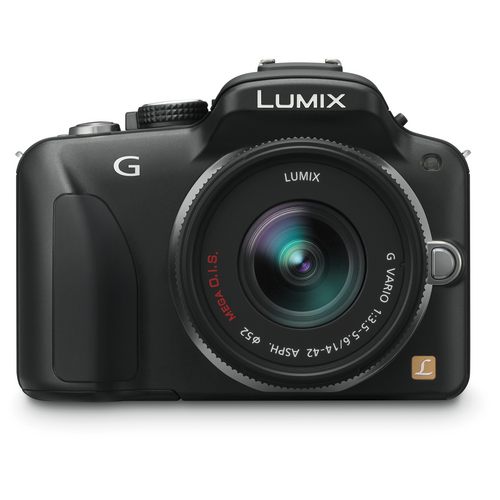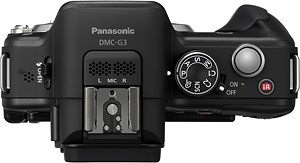The best street snapper yet?
With today’s announcement of the Panasonic G3, scheduled to ship in June, Panasonic may have created the best street snapping camera yet. What follows is largely viewed from that perspective.
Some history. The Panasonic G1 was the first Micro Four-Thirds camera. Like the first iPad, there was so little wrong with the design that there have been few compelling reasons to upgrade. The GF1 and GF2 bodies deleted the eye-level finder, rendering the body largely useless for serious photography. The short lived G10 used a cheapened EVF and was discontinued shortly after release. The G2 added a movie mode and a touch screen – the latter the ‘push’ rather than the true touch type in the iPad and iPhone. A solution looking for a problem. The costly GH1 and GH2 bodies added sophisticated movie modes with the GH2 sporting the second sensor design in the G range, all the others having shared the one from that original G1. That sensor brought more megapixels and reviews suggest that the noise levels are now down to those in APS-C cameras.

The Panasonic G3 – complete with strange model designation.
While the G3 does not get rid of the faux prism hump, it is nevertheless of great interest to street snappers. My G1 has seen more pictures taken with it in my 21 months of ownership than any camera I have ever owned, and I have been banging away for some 50 years now, since I was a kid. My shot counter shows well over 10,000 exposures. So any improvements to the G1 make my radar screen. Nearly everything I have been reading about the G3 suggests it’s worth upgrading to one, especially as I now have no back-up camera, my Canon 5D gear all sold in favor of the smaller, lighter Panny and its three lenses – the Oly 9-18, the 14-45 kit zoom and the 45-200 Panny, all superb and all very light and small.
Here are the major changes in the G3 compared to the G1:
- The body is smaller, the unnecessary hand grip slimmed down. Smaller is always better.
- The battery is smaller at 7.3mAh vs. 9 mAh, or 20% less. As I routinely get over 400 exposures on a charge with the G1, getting ‘only’ 320 is hardly an issue.
- The EVF eye proximity sensor is gone – this would switch off the LCD when the camera was raised to eye level. No problem. The only time I use the LCD it when formatting an SDHC card; otherwise it remains folded with the screen in to the body.
- The focus mode dial top left is gone. I use AF all the time so I don’t care and there’s still touch manual focus when the shutter release is part depressed and the focus mount is touched. Apparently the MF enlarged area now appears in a window so that should make this even more useful.
- The AEL/AEF lock button is gone. Not good, but there are two programmable function buttons in its place where the AEL function, which I use quite a bit, can be assigned.
- All the dumb-as-it-gets scene modes have disappeared from the mode dial. Hooray. Let’s also hope they made the click stops more robust.
- The single shot/motor drive/delayed action lever has disappeared and is now a menu choice. I use single shot only so it does not matter.
- The mode dial now has two Custom settings – wonderful. I will set one at ISO 400, the other at ISO 1600.
- As with the G2, the thumb wheel is on the rear, not on the front as with the G1. I cannot tell you how frustrating the placement of the one on the G1 is – I am still frequently depressing it accidentally, going into +/- exposure mode, when all I want to do is change the aperture (I snap only in aperture priority mode).
- The square format mode has been dropped (no problem) but there’s still a choice of 4:3 or 3:2 – the latter essential for one brought up with 35mm Leicas. That’s all I use.
- The body is rumored to use an alloy frame, replacing the plastic one. Nice, I suppose.
Sadly, no blue model is available, the silly choices being white, red or brown. All ‘Yecch’ colors. Black is the way to go.
As with all previous Panny MFT bodies, there is no OIS shake reduction. That’s built into select Panny lenses. Only Olympus MFT bodies have in-body OIS.
There’s some sort of setting to blur backgrounds which I have yet to understand. No matter – I simply use Auto Blurâ„¢.

The simplified mode dial on the G3.
But the most important changes are under the skin. First, Panny claims that the speedy autofocus in the G1/G2 is now even faster, and comparable with that found in most DSLRs. This may actually make that slow focusing dog, the 20mm Panasonic lens, useable. I returned mine after a trial run which delivered 30% of my pictures out of focus. For comparison, the kit lens has a focus failure rate in my hands of maybe 1%. Second, the new 16mp sensor, likely a variant of the one found in the costly $900 GH2 body, has been installed. That probably means one to two stops less noise and should substantially clean up noise at 1600 ISO. My G1 with kit lens ran me $640, whereas the G2 is $700.
I have ordered a black body only for $600 and will write more when I have had a chance to wring it out. The learning curve should be low, owing to the similarity in the bodies, and I already know my three lenses are just fine for what I do, so I’m optimistic that things should work out well, with the G1 moving to the role of back-up body. Mechanical noise? No way of telling until I try it, but let’s hope it’s the same or less as in the G1, which is a very quiet camera. Indeed, the low frequency of the noise emitted by the G1 puts any M Leica to shame.
Part II is here.